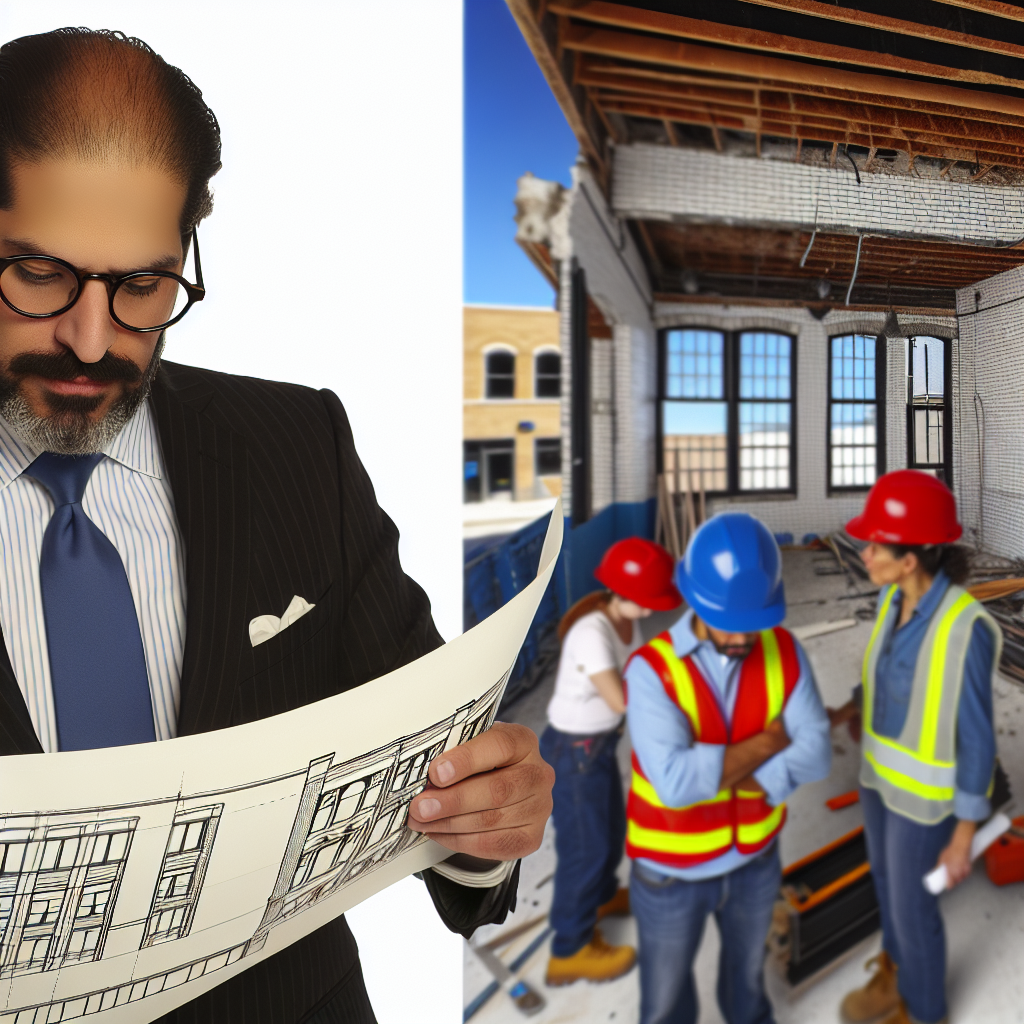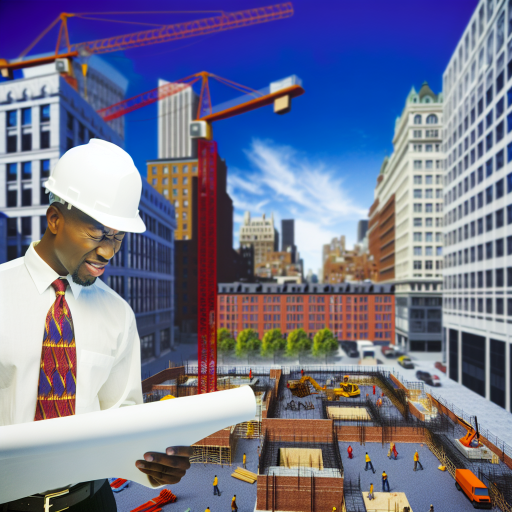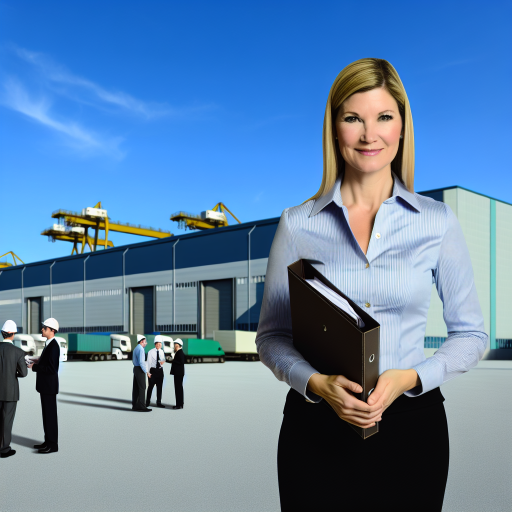Introduction to Adaptive Reuse in Commercial Real Estate
Adaptive reuse refers to the process of repurposing buildings for new uses.
This practice has gained popularity in commercial real estate development.
It allows developers to breathe new life into old structures.
Moreover, adaptive reuse can stimulate local economies.
It also plays a crucial role in sustainability efforts.
Transforming old buildings can reduce waste and conserve materials.
Historical Context of Adaptive Reuse
The concept of adaptive reuse has roots dating back centuries.
Many historic buildings were repurposed to meet changing community needs.
As urban centers evolved, so did the buildings within them.
This practice not only preserves history but also fosters innovation.
Environmental Benefits
One significant advantage of adaptive reuse is environmental sustainability.
It minimizes the need for new construction materials.
Additionally, it often reduces energy consumption.
Repurposing structures lessens the overall carbon footprint.
Furthermore, it contributes to urban green space preservation.
Economic Advantages
Adaptive reuse can also provide substantial economic benefits.
It often requires less investment compared to new constructions.
Developers can attract tenants quickly due to unique building features.
Moreover, adaptive reuse can enhance property values in revitalized areas.
This approach fosters job creation during renovations and afterward.
Community Impact
Adaptive reuse significantly impacts local communities and neighborhoods.
It helps maintain the character of historic districts.
Additionally, it provides opportunities for new businesses to thrive.
Community engagement is often a critical component of adaptive reuse projects.
This approach encourages collaboration among stakeholders.
Regulatory Considerations
Local regulations often influence adaptive reuse projects.
Developers must navigate zoning laws and building codes carefully.
Moreover, historic preservation guidelines can impose additional requirements.
Understanding these regulations can enhance project success.
Collaboration with local governments can ease this process.
Environmental Benefits: Reducing Waste and Energy Consumption
Minimizing Waste Through Reuse
Adaptive reuse significantly reduces construction waste.
By repurposing existing structures, developers divert materials from landfills.
This approach decreases the demand for new materials.
Consequently, it lessens the environmental impact of extraction and manufacturing.
Conserving Energy in Development
Reuse projects often conserve more energy compared to new constructions.
Renovating older buildings eliminates the need for energy-intensive new builds.
Many established structures incorporate inherent energy-saving features.
For instance, thick walls and high ceilings improve insulation.
Such characteristics reduce reliance on heating and cooling systems.
Enhancing Local Ecosystems
Adaptive reuse contributes positively to local ecosystems.
Preserving existing buildings maintains neighborhood character and history.
This preservation fosters a sense of community identity.
Moreover, it can promote biodiversity by retaining green spaces.
Landscaping around reused structures enhances local flora and fauna.
Financial and Resource Efficiency
Utilizing existing buildings proves cost-effective for developers.
It often costs less than constructing new facilities from scratch.
Additionally, adaptive reuse projects can attract tax incentives.
These benefits encourage more sustainable investment strategies.
Saving resources also aligns with corporate social responsibility goals.
Economic Advantages: Cost Savings and Increased Property Values
Cost Savings Through Adaptive Reuse
Adaptive reuse often reduces construction costs significantly.
Renovating existing structures is generally less expensive than new builds.
This process minimizes material waste, which contributes to savings.
Furthermore, developers can benefit from lower labor expenses.
Utilizing existing frameworks can expedite project timelines.
Furthermore, acquiring land can be costly in urban areas.
Reusing buildings can alleviate the financial burden of purchasing new land.
Increased Property Values
Adaptive reuse can enhance property values significantly.
First, it often preserves historic character and charm.
This demand attracts tenants and buyers looking for unique spaces.
Moreover, well-executed projects improve the local aesthetic appeal.
Consequently, revitalization can lead to increased community investment.
Localized development can also reduce vacancy rates in the area.
Moreover, higher demand can result in increased rental rates.
Developers can achieve better returns on investment with adaptive reuse.
Environmental and Social Benefits
Adaptive reuse promotes sustainability in real estate development.
It reduces the need for raw materials, preserving natural resources.
This approach minimizes environmental impacts associated with demolition.
Additionally, it fosters community engagement and local pride.
Repurposing old buildings often leads to unique spaces for businesses.
These spaces can become cultural hubs within neighborhoods.
See Related Content: Why Adaptive Reuse is the Future of Commercial Real Estate Development
Cultural and Historical Preservation: Maintaining Community Identity
The Importance of Cultural Heritage
Cultural heritage shapes community identity and cohesion.
It connects individuals to their past and fosters a sense of belonging.
Therefore, preserving historical structures can enhance local pride.
Benefits of Preserving Historical Buildings
Adaptive reuse revitalizes old structures for modern needs.
This approach maintains architectural beauty and historic charm.
Moreover, it attracts tourists and boosts local economies.
Visitors appreciate the stories behind these preserved sites.
Community Engagement in Preservation Efforts
Involving local communities in adaptive reuse plans is essential.
Residents often have valuable insights into their heritage.
Furthermore, community engagement fosters ownership and pride.
Public support for projects increases when locals contribute ideas.
Case Studies of Successful Adaptive Reuse
The High Line in New York City exemplifies effective adaptive reuse.
Once a derelict railway, it now serves as a vibrant park.
This transformation boosts local businesses and promotes gatherings.
Similar projects have emerged in cities worldwide.
Challenges in Adaptive Reuse
Despite its advantages, adaptive reuse faces obstacles.
Financial constraints can limit project feasibility.
Additionally, zoning laws sometimes complicate renovations.
However, collaboration between developers and local governments can mitigate these issues.
The Role of Policy in Preservation
Effective policies promote and protect historical sites.
Government incentives encourage developers to pursue adaptive reuse.
Also, educational programs raise awareness about cultural significance.
Ultimately, strong policies nurture long-term community benefits.
Gain More Insights: Why Co-Working Spaces Are Becoming the Future of Commercial Real Estate
Flexibility of Space: Adapting to Market Demands and Trends
Responding to Changes
Commercial real estate development requires constant adaptation to market changes.
Flexibility in space usage allows property owners to react quickly.
Business needs often fluctuate, making adaptable spaces essential.
For instance, a retail space can transform into office space as demand shifts.
This approach maximizes asset utilization and minimizes vacancies.
Enhancing Tenant Experience
Flexible spaces enhance tenant satisfaction and retention.
They create environments that meet diverse tenant needs.
For example, co-working areas cater to freelancers and startups.
Moreover, these layouts promote collaboration among tenants.
A well-designed space can boost productivity and foster innovation.
Meeting Sustainability Goals
Adaptive reuse aligns with sustainability initiatives in real estate.
Repurposing existing buildings is usually more resource-efficient.
It reduces construction waste and the demand for new materials.
Such practices contribute to the circular economy and lower carbon footprints.
Ultimately, sustainable developments attract environmentally-conscious tenants.
Long-Term Financial Benefits
Flexible spaces can lead to significant financial advantages.
They often command higher rental rates due to their versatility.
Additionally, property owners can save on renovation costs when adapting spaces.
Long-term leasing agreements become more feasible with adaptable designs.
In essence, smart investments in flexible spaces pay off over time.
Find Out More: Why E-Commerce Growth is Reshaping Commercial Real Estate in Retail Markets

Enhanced Community Engagement
Creating Vibrant Multi-Use Spaces
Adaptive reuse transforms underutilized buildings into dynamic environments.
This approach fosters community interaction and inclusivity.
Furthermore, it encourages local businesses by providing shared spaces.
Residents feel more connected in vibrant, multi-use areas.
Such spaces often attract a diverse crowd, enhancing local culture.
Ultimately, they become hubs for social engagement and collaboration.
Bridging the Past and Present
Repurposing historical buildings preserves cultural heritage.
This blend of old and new creates unique architectural experiences.
As a result, these spaces tell the story of their surroundings.
Moreover, they reflect the evolving interests of the community.
People appreciate spaces that honor history while serving modern needs.
This duality enhances the sense of identity within the community.
Encouraging Sustainable Practices
Adaptive reuse significantly reduces environmental impacts.
It minimizes waste by repurposing existing structures.
This strategy lowers the demand for new materials and resources.
Consequently, it contributes to a more sustainable urban landscape.
Additionally, revitalized spaces promote green initiatives.
Building owners often incorporate energy-efficient technologies.
Fostering Economic Growth
Community-focused redevelopment stimulates local economies.
New businesses flourish in adaptive reuse areas.
Job creation increases as these spaces attract more visitors.
Moreover, enhanced property values boost tax revenues.
This economic benefit allows for further community investments.
Ultimately, adaptive reuse generates a cycle of positive growth.
Uncover the Details: Commercial Real Estate: Key Insights for Smart Investments
Challenges and Considerations in Adaptive Reuse Projects
Regulatory Hurdles
Adapting existing structures often involves navigating complex zoning laws.
Local governments frequently impose strict regulations on modifications.
Developers must also secure necessary permits for construction activities.
Additionally, compliance with health and safety codes is critical.
Understanding these regulations early on can mitigate potential delays.
Structural Integrity Concerns
Older buildings may have deteriorated over time due to neglect.
Assessing the structural stability of these buildings is essential.
Hiring experienced structural engineers can help identify risks.
Furthermore, retrofitting may be required to meet current standards.
This process can incur significant costs for developers.
Financial Considerations
Financial feasibility is a crucial aspect of adaptive reuse projects.
Initial investment costs can be higher than new constructions.
Developers must conduct thorough cost analyses to identify budget impacts.
It’s also important to explore funding opportunities and incentives.
State grants and tax credits may significantly offset expenses.
Community Engagement
Engaging with the local community is vital for the project’s success.
Community resistance can hinder progress and lead to negative feelings.
Developers should solicit local input during the planning stages.
Hosting informational meetings can foster transparency and trust.
Listener feedback often contributes valuable insights for the project.
Sustainability Factors
Adaptive reuse aims to promote environmental sustainability.
However, developers must ensure that modifications do not harm the ecosystem.
Choosing eco-friendly materials can enhance the project’s sustainability.
Additionally, effective waste management strategies are necessary.
Prioritizing energy efficiency can lower operational costs in the long run.
Case Studies: Successful Adaptive Reuse Examples in Major Cities
New York City: The High Line
The High Line is a prime example of adaptive reuse.
This elevated rail line transformed into a public park attracts thousands daily.
The project enhanced urban green space while preserving historical elements.
Residents appreciate the mix of landscaping and art installations.
Los Angeles: The Ace Hotel
The Ace Hotel in Downtown Los Angeles showcases successful adaptive reuse.
Originally opened as the United Artists building, it now hosts a vibrant hotel.
This project revitalized the area, promoting local businesses.
The preservation of original architectural details creates a unique atmosphere.
Chicago: The Adaptive Reuse of a Historic Warehouse
In Chicago, a former warehouse became a thriving community hub.
This space now houses restaurants, shops, and art studios.
By reimagining the structure, developers preserved local history.
Residents enjoy a blend of modern amenities and historic charm.
Philadelphia: The Schuylkill River Trail
The Schuylkill River Trail demonstrates adaptive reuse in urban planning.
This project transformed a neglected space into a scenic walking and biking path.
It connects various neighborhoods while showcasing the river’s natural beauty.
This initiative promotes outdoor activities and community engagement.
San Francisco: Pier 70
Pier 70 exemplifies adaptive reuse in maritime history.
Once a shipyard, this area is now a mixed-use development.
Preserving the original buildings honors the city’s industrial past.
It incorporates residences, offices, and public spaces for community use.
Toronto: The Distillery District
The Distillery District in Toronto highlights successful urban revitalization.
This historic distillery has been converted into a pedestrian-only area.
Visitors enjoy cafes, art galleries, and boutiques in a unique setting.
The project preserved significant industrial architecture, enhancing cultural heritage.
Additional Resources
Arlington Adopts Adaptive Reuse Policy to Transform Office Vacancy …




